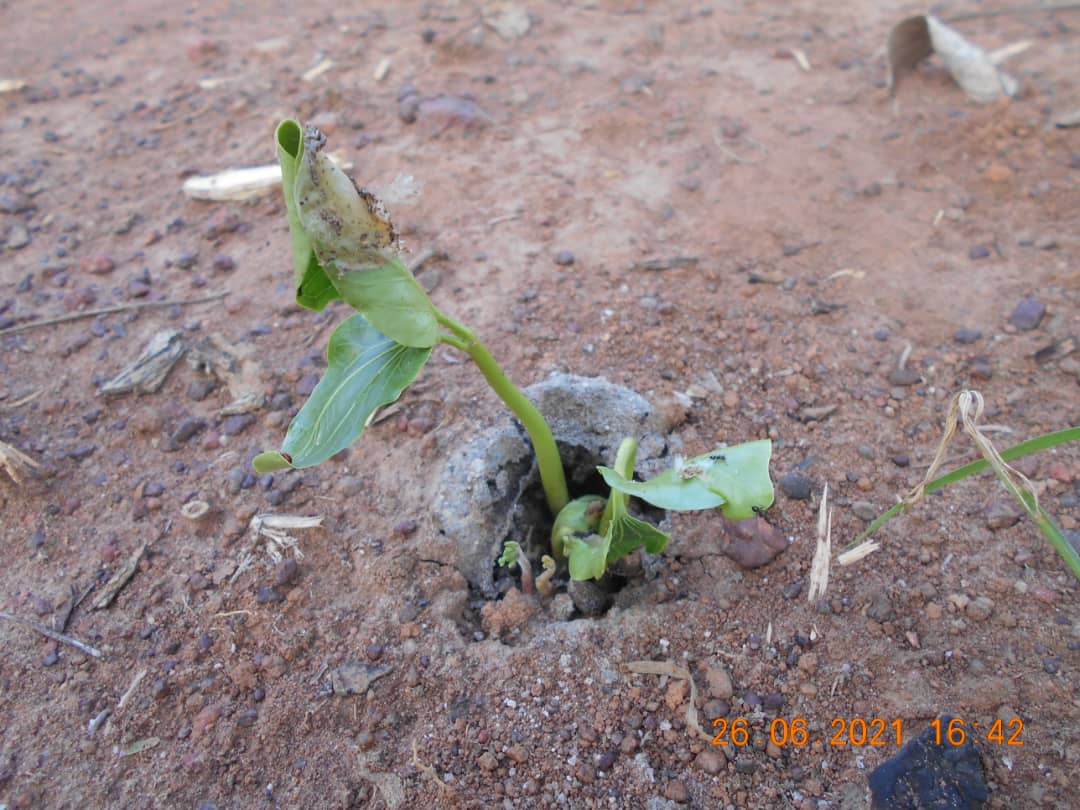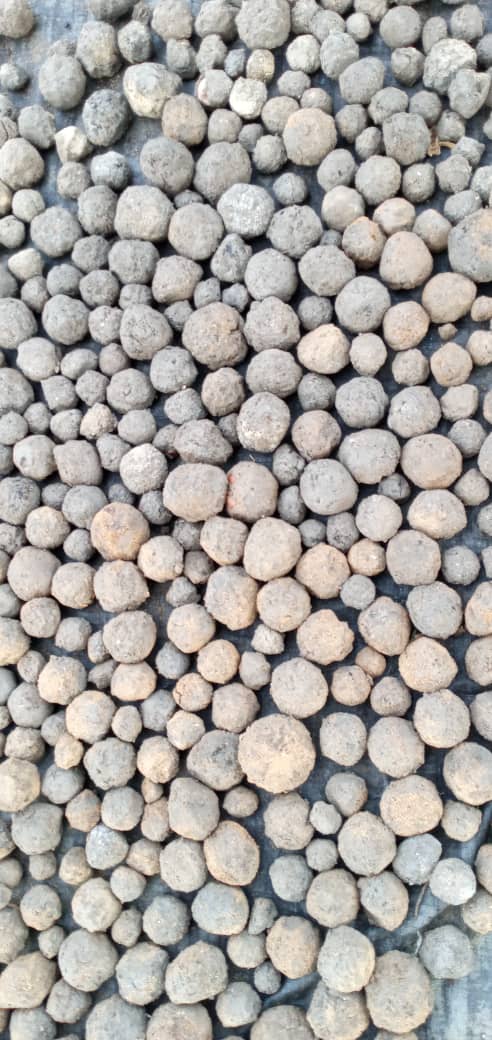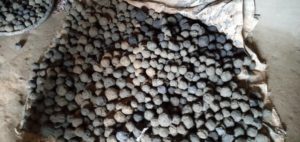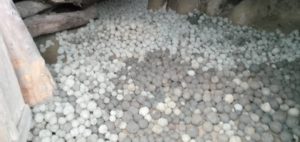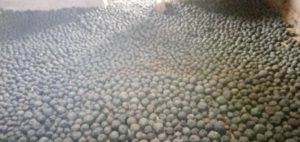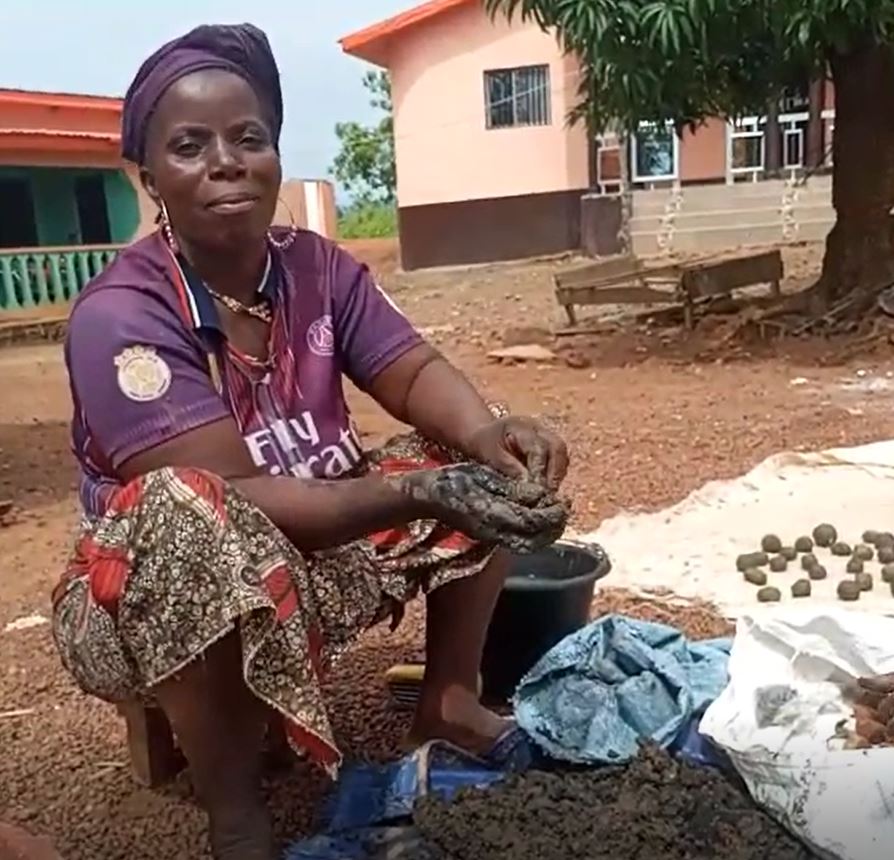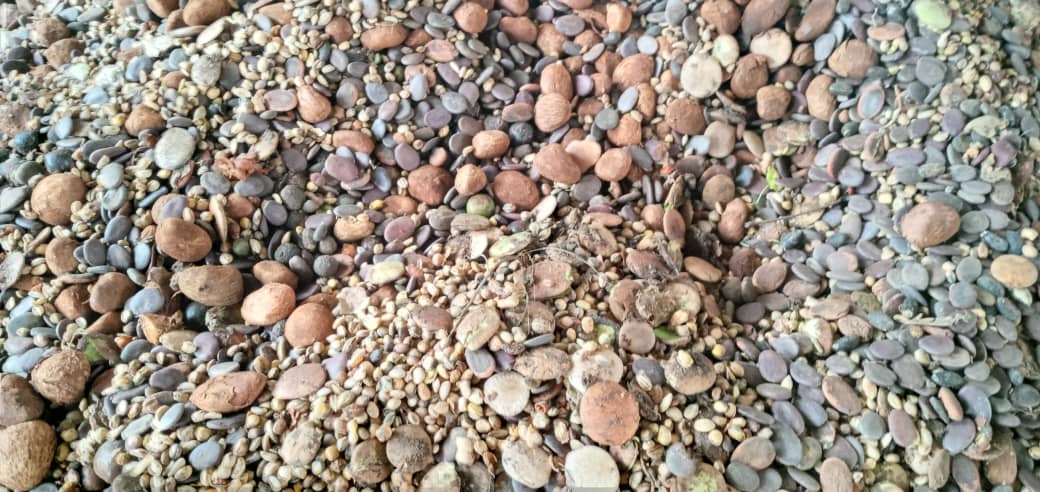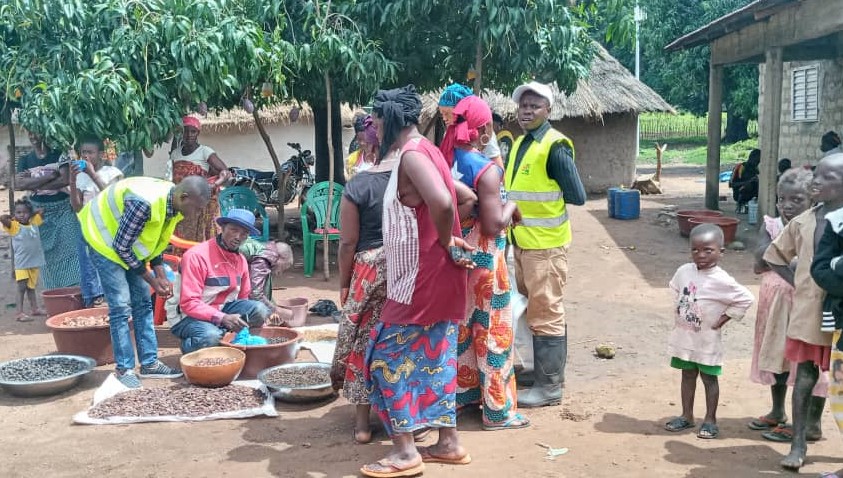What a pleasure to see the first sprouting! The conditions are indeed ideal: it’s raining, it’s warm and the cattle are staying in the pen. It is up to the young tree to take advantage of these conditions to grow and survive parasites and fungal diseases. In our hyper-protected world, we forget that life is full of surprises and risks. Good luck, little shoot!
Training the sowers
The sowing of seedballs is an opportunity to bring together the village growers for a little training. Indeed, it is more friendly and efficient to spread the seedballs all together. Under the instructions of our team leader, the villagers can progress in parallel lines. This way the seedballs are spread evenly over the whole field. Each seed has an equal chance to fall in its right place. The second advantage of sowing in lines is that it is easier to find the seedlings to clear when the tall grass has grown to human height.
Green light to sow
Have fun at sowing seeds ! The villagers sow the fields with the seedballs: 5’000 seedballs per hectare to guarantee a beautiful and diverse forest.
Which tree species will germinate from each seedball? We will find out in 6 months, after the rainy season.
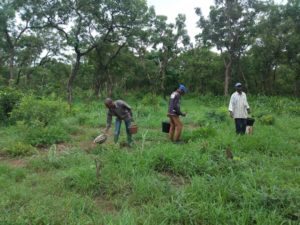

In some places we are testing the poquet technique: make a small hole to put the seedballs in. Sowing seeds in this way will protect them even better.
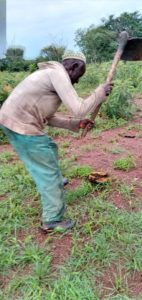

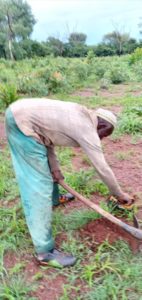

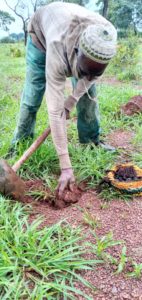

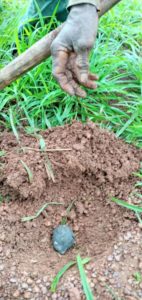

As you can see, the vegetation is green because the rains have already started. The grasses growing around the future plants are an advantage and a disadvantage: some young trees like the shade and protection of the wild grass, others need light and freedom. Natural selection will decide which tree will germinate where. Sowing seeds in rows will make it easier to clear the ground after the rainy season.
For tropical species the average germination rate under direct seeding is 38% and the establishment rate is 17% (Direct Seeding in Reforestation – A field performance review, p. 101). The seedball technique increases the germination rate to 50%. So 2500 seeds should germinate on each hectare, and we have sown 150 hectares!
Seedballs everywhere !
Rolling seedballs
Back in the villages, the seeds are coated to make the famous seedballs. It’s very simple, you just have to mix clay powder with charcoal powder and a little water. Of course, the clay and charcoal must first be crushed to make a powder which is then sieved.
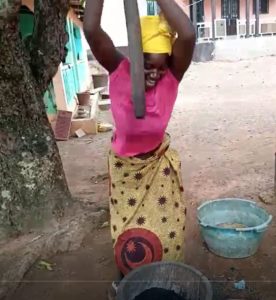

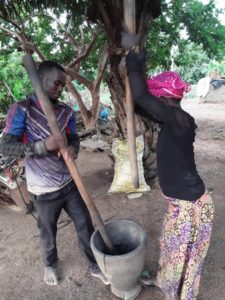

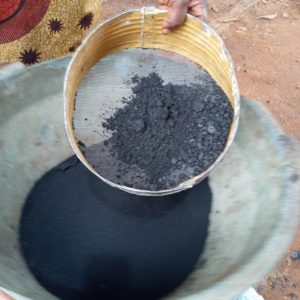

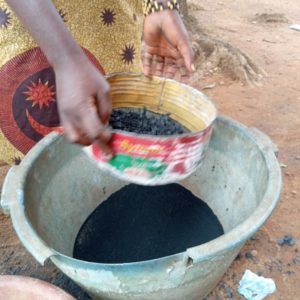

The result is a sticky paste into which a seed is inserted. Then you roll it between your hands to make a ball.
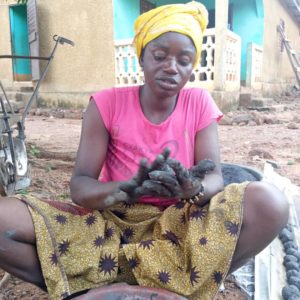

And then you let it dry in the sun.
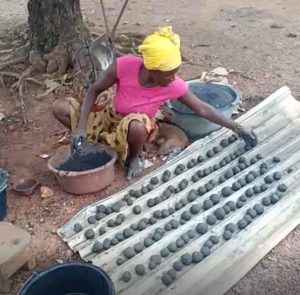

It’s amazing, you can find seedballs coaters in every corner of the village!
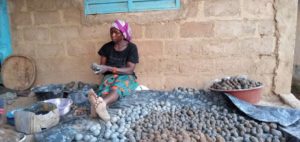



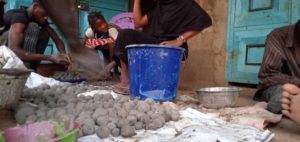



Is the dosage secret? Not at all! It is an important principle of arboRise to experiment and share our experience, our successes and failures. The recipe is here, try it!
Seed salad
In order to strengthen biodiversity, we are making a large mixture of all the seeds of all the tree species. This happens in Linko, the capital of the sub-prefecture. The 10,000 seeds collected by each of the 75 families are collected in a free classroom, made available by the mayor of Linko.
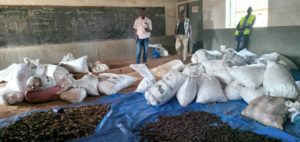

Several women growers come to help our team.
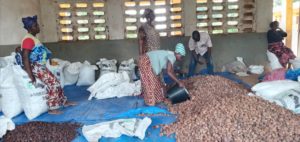

Finally the seed mixture is put back into the bags for pelleting. The destination of each bag is noted so that no village is forgotten.
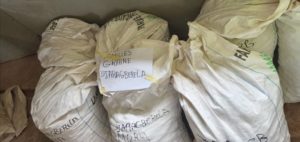

This stage is crowned by the official thanks of the Sub-Prefect and a photo of all those involved.


The biodiversity of tree species will make the forest more resilient to the dangers that threaten it (parasites, fires, livestock, etc.).
Counting seeds
Under the eye of the village children, the women farmers bring in their harvest of seeds.
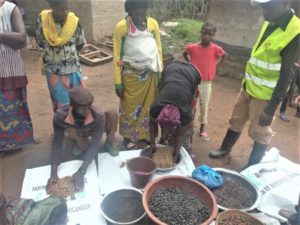

The seeds are counted and weighed,
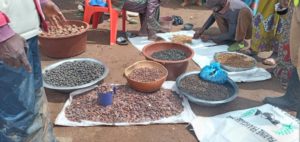

and then put into bags for transport to Linko, the capital of the sub-prefecture.
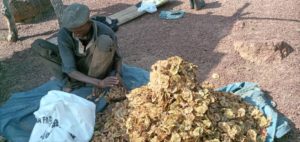

arboRise’s principle is to fully involve the population concerned by the project. This way, they take ownership of the forest, their forest. In addition, the project creates enthusiasm, a collective energy in each village. This mobilisation is an important lever for change and a source of hope for the entire region.
arboRise at Objectif Terre
Amazing how many positive and inspiring encounters we had at our stand at the Objectif Terre Festival! Thank you to all members who visited us and to all people who discovered us on this occasion. Your compliments and wishes for success give us a lot of energy.


Like the biodiversity of the trees which we plant in Guinea, the trees which have been drawn on our collective fresco show the diversity of our visitors:
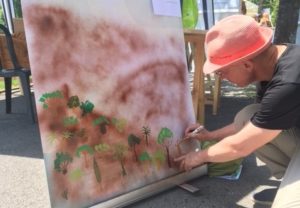

What is most appealing about arboRise ? Our participatory approach and our natural organic reforestation methods.
Fast pay…
Upon delivery of the seeds by a family, our team performs a quality control. Our partner also checks the quantity delivered. After all, it takes 10,000 seeds from each of the 75 seed trees!


The family that collected the seeds is then paid and thanked for their work.
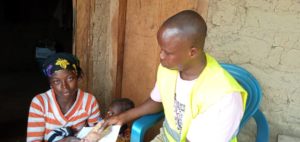

Then the seeds are put into the big bags. Soon they will be transported to Linko to mix all the species.
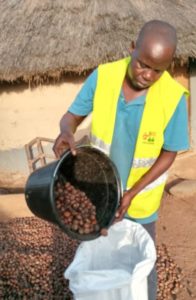

Each bag is duly identified: we will soon be talking about protected designation of origin AOC for Guinean seeds!
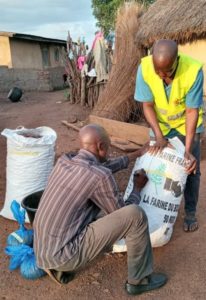

Collecting seeds
The 75 “seed families” who are involved with arboRise have started collecting seeds from their trees. With 10’000 seeds per family, this work takes time! Depending on the type of seed, the transport can even be heavy. Of course, as soon as the seeds are delivered to our team, the work is paid for at its fair value.
After having dealt only with men until now, our team is now working with the women farmers, as they are traditionally responsible for the harvest.

